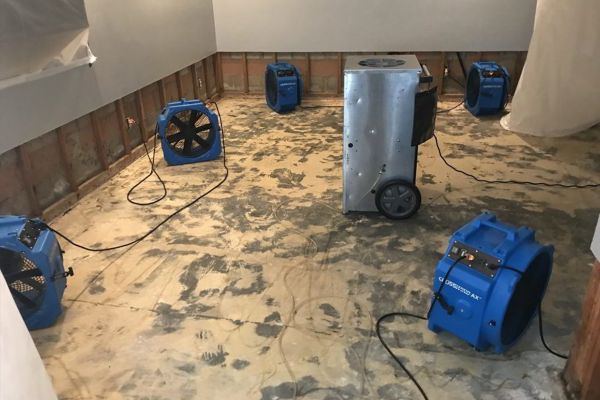Flooding in a home can cause major water damage, leaving homeowners scrambling around to salvage the property. One of the worst and most damaging effects of flooding is mold. When water enters a home, especially if it lingers there, it creates an ideal environment for mold growth. Mold may begin growing in 24 to 48 hours after water exposure. It can pose health risks to family members and cause structural damage to a home.
The help of professional flood removers is essential to managing the aftermath of a flood, including preventing and controlling mold growth. This article will discuss how flood-removal experts protect your property from mold to ensure a successful and safe restoration.
Rapid Water Extracting And Drying
To avoid mold after flooding, remove all standing water immediately. Flood removal professionals have the knowledge and equipment needed to extract water effectively, which will help stop mold before it begins to grow.
Professionals use industrial-grade vacuums, pumps, and other water extraction tools to remove any water, even in difficult-to-access areas. This action stops moisture from seeping into walls, floors, and structural elements, reducing the risk of mold. Once standing water is eliminated, drying begins immediately, ensuring that all areas are dried completely.
For a faster drying process, experts in flood removal will use dehumidifiers to remove moisture and air movers. They also monitor moisture levels to ensure your home’s air isn’t too moist. That could encourage the growth of mold.
Mold Detection And Identification
Mold can still grow even though water has been removed as quickly as possible. Homeowners may not be aware of hidden areas where mold could develop. Flood removal specialists are trained to examine all areas of your home looking for mold. They assess all areas of your home, including behind walls, beneath floors, within insulation, basements, and crawl spaces.
They can use moisture meters and cameras that detect moisture even when it is not visible. These tools can help prevent mold from growing in your home.
Professionals can help prevent mold from spreading by identifying it early or recognizing areas likely to develop mold.
Deep Cleaning And Sanitization
Experts in flood removal help prevent mold growth by thoroughly cleaning and disinfecting all affected areas after water extraction. Floodwaters may contain contaminants, including bacteria, dirt, and chemicals.
Using specialized cleaning solutions, experts disinfect surfaces and materials exposed to floodwaters. This method not only reduces the possibility of spreading mold spores but also eliminates harmful bacteria. All hard surfaces, including walls, floors, countertops, and even the ceiling, are thoroughly cleaned to remove debris or mold.
Where porous items like carpets are damaged, drywall and insulation may have to be replaced. Mold thrives in organic materials.
Mold Prevention Treatments
Flood removal professionals often apply mold prevention treatments to vulnerable areas in addition to cleaning and drying. These treatments usually contain antimicrobials that stop mold from spreading. These solutions can be used to treat walls, floors, and other surfaces affected by the flooding.
These treatments can be particularly useful in areas of your home where mold is likely to grow, such as bathrooms, basements, and crawl spaces. Using these mold-resistant solutions will add an additional layer, protecting your home even after immediate cleanup is completed.
Safe Mold Removal
Flood removal experts have been trained in effective and safe methods if mold has already developed due to flooding. Mold remediation involves a delicate process requiring specialized tools and protective gear.
The professionals follow industry-standard protocols to contain mold, remove it, and dispose of contaminated products properly. This helps prevent mold from spreading while the cleaning is being done and also protects the health of those living in the home.
DIY mold removal may be risky, as mold spores released when disturbed can exacerbate the problem. Professionals use containment strategies such as securing the area with plastic and applying negative air pressure.
Conclusion
Flooding is a major cause of damage to your house, but it doesn’t stop when the water has been removed. Mold is one of the most serious concerns after a flood. It can grow rapidly and cause serious damage to your home and property. Experts who specialize in flood damage removal are vital to protecting your home by offering mold prevention, rapid water removal, and thorough drying.
Their knowledge and expertise in mold detection, removal, and care afterward ensure your home will be restored to a safe, mold-free environment. The best way to protect yourself and your property is to hire professionals for flood removal.


